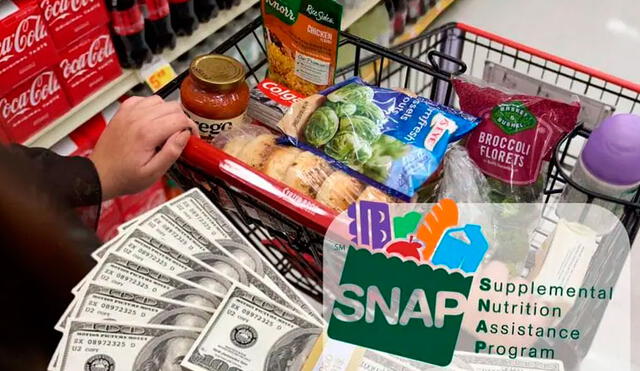SNAP Benefits in 2025: Eligibility for Individuals Earning $1,800 Monthly in the US
Earning $1,800 monthly? Discover how SNAP benefits in 2025 could still be within your reach through allowable deductions and state-specific rules. Learn what you need to know today.

The Supplemental Nutrition Assistance Program (SNAP) continues to play a vital role in combating food insecurity in the United States. In 2025, millions of Americans rely on SNAP to help cover their nutritional needs. While eligibility is based on factors like income, household size, and deductions, understanding how these elements apply is essential, especially for those earning $1,800 per month. This article delves into how SNAP benefits work and whether individuals in this income bracket may qualify.
Navigating SNAP eligibility can be complex due to federal and state-specific rules. With gross income limits tied to the federal poverty line and deductions for essential expenses like housing and medical bills, even those earning above the threshold might still qualify. Here’s an in-depth look at what you need to know.

ALSO SEE: Are Jennifer Aniston and Barack Obama dating? The rumor that's taking the internet by storm
Income requirements and eligibility in 2025
SNAP eligibility is determined by gross and net income thresholds, which vary based on household size. Gross income refers to total monthly earnings before deductions, while net income is calculated after allowable expenses. In 2025, the gross income limit is set at 130% of the federal poverty line, with higher thresholds for larger households.
For example, the gross income limit for a single individual is $1,630.21 per month, while a family of three has a limit of $2,152 per month. This means that a household earning $1,800 monthly may still qualify, particularly if they can apply deductions to lower their net income.
Deductions that can impact eligibility
Eligibility for SNAP benefits often hinges on deductions that lower an applicant’s net income. For those earning $1,800 per month, certain expenses may make a significant difference:
- Housing Costs: Rent and utilities are among the primary deductions considered by SNAP. Individuals paying a substantial portion of their income toward housing may reduce their net income enough to qualify.
- Medical Expenses: Applicants with chronic illnesses or significant healthcare costs can use these expenses as deductions, which may improve their eligibility.
Deductions play a critical role in making SNAP accessible to individuals who might otherwise exceed gross income limits.
State-Specific rules and their importance
While SNAP is a federal program, states have flexibility in implementing certain aspects of the program, which can influence eligibility. Some states provide additional deductions or higher income limits, particularly for larger households. This variation means that individuals earning $1,800 monthly should explore their state’s specific rules to determine whether they qualify.
States also consider household size when setting income thresholds, which means larger families are more likely to meet the criteria compared to smaller households. Understanding how these rules apply in your state is crucial for maximizing your chances of receiving benefits.
Why It’s important to check your eligibility
Even if your income is near or slightly above the gross limit, exploring deductions and state-specific rules can reveal opportunities for eligibility. SNAP benefits are a lifeline for many, helping ensure that individuals and families have consistent access to nutritious food.
The USDA provides resources to guide applicants through the process, offering clear guidelines on how to calculate income and apply deductions. For those uncertain about their eligibility, personalized assistance is available through a text service, where individuals can text “Food” to 74544 for help.